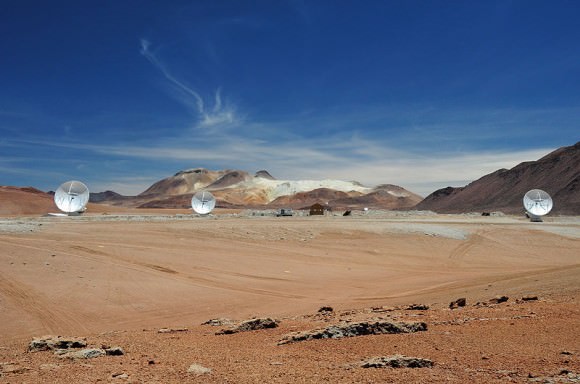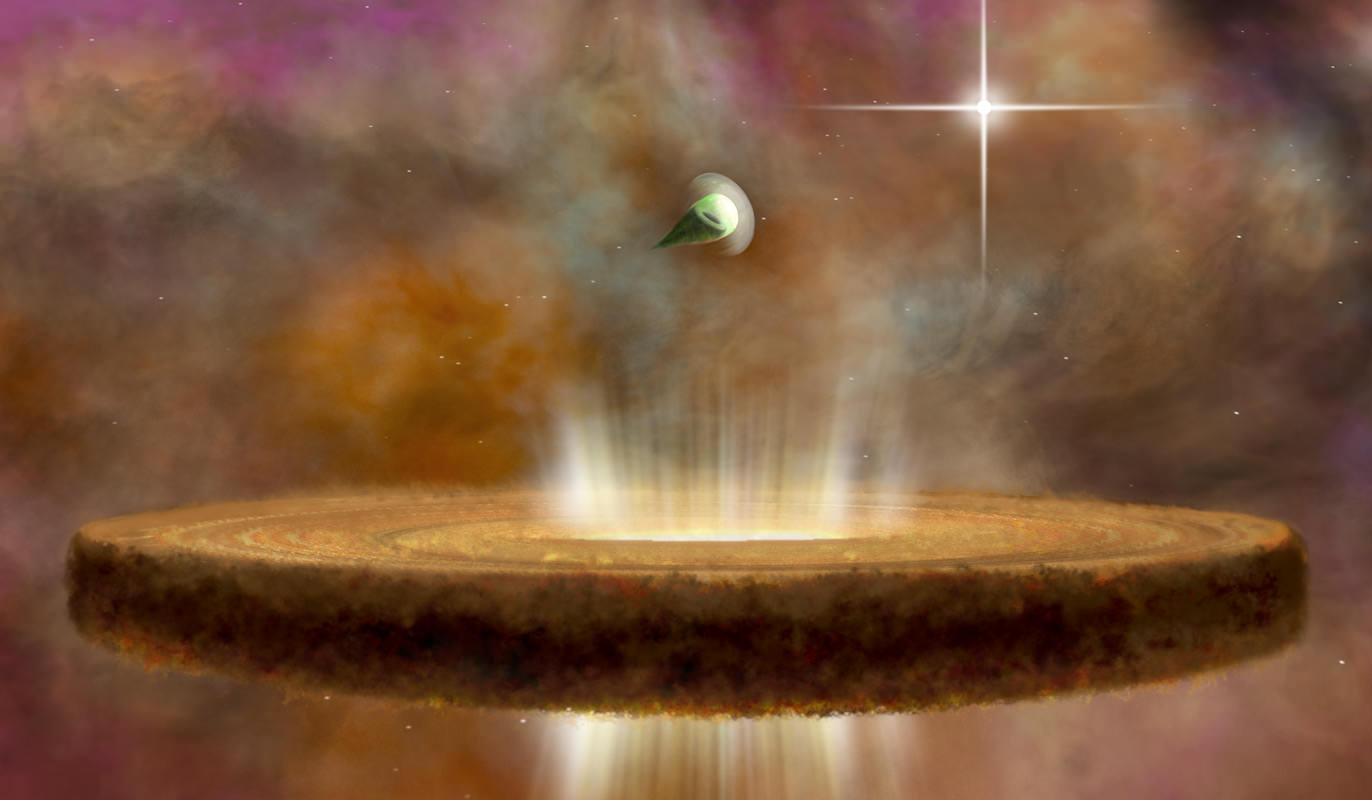It’s a tough old universe out there. A young star has lots to worry about, as massive stars just beginning to shine can fill a stellar nursery with a gale of solar wind.
No, it’s not a B-movie flick: the “Death Stars of Orion” are real. Such monsters come in the form of young, O-type stars.
And now, for the first time, a team of astronomers from Canada and the United States have caught such stars in the act. The study, published in this month’s edition of The Astrophysical Journal, focused on known protoplanetary disks discovered by the Hubble Space Telescope in the Orion Nebula.
These protoplanetary disks, also known as “tadpoles” or proplyds, are cocoons of dust and gas hosting stars just beginning to shine. Much of this leftover material will go on to aggregate into planets, but nearby massive O-Type stars can cause chaos in a stellar nursery, often disrupting the process.
“O-Type stars, which are really monsters compared to our Sun, emit tremendous amounts of ultraviolet radiation and this can play havoc during the development of young planetary systems,” said astronomer Rita Mann in a recent press release. Mann works for the National Research Council of Canada in Victoria and is lead researcher on the project
Scientists used the Atacama Large Millimeter Array (ALMA) to probe the proplyds of Orion in unprecedented detail. Supporting observations were also made using the Submillimeter Array in Hawaii.
ALMA saw “first light” in 2011, and has already achieved some first rate results.
“ALMA is the world’s most sensitive telescope at high-frequency radio waves (e.g., 100-1000 GHz). Even with only a fraction of its final number of antennas, (with 22 operational out of a total planned 50) we were able to detect with ALMA the disks relatively close to the O-star while previous observatories were unable to spot them,” James Di Francesco of the National Research Council of Canada told Universe Today. “Since the brightness of a disk at these frequencies is proportional to its mass, these detections meant we could measure the masses of the disks and see for sure that they were abnormally low close to the O-type star.”

ALMA also doubled the number of proplyds seen in the region, and was also able to peer within these cocoons and take direct mass measurements. This revealed mass being stripped away by the ultraviolet wind from the suspect O-type stars. Hubble had been witness to such stripping action previous, but ALMA was able to measure the mass within the disks directly for the first time.
And what was discovered doesn’t bode well for planetary formation. Such protostars within about 0.1 light-years of an O-type star are consigned to have their cocoon of gas and dust stripped clean in just a few million years, just a blink of a eye in the game of planetary formation.
With a O-type star’s “burn brightly and die young” credo, this type of event may be fairly typical in nebulae during early star formation.
“O-type stars have relatively short lifespan, say around 1 million years for the brightest O-star in Orion – which is 40 times the mass of our Sun – compared to the 10 billion year lifespan of less massive stars like our Sun,” Di Francesco told Universe Today. “Since these clusters are typically the only places where O-stars form, I’d say that this type of event is indeed typical in nebulae hosting early star formation.”
It’s common for new-born stars to be within close proximity of each other in such stellar nurseries as M42. Researchers in the study found that any proplyds within the extreme-UV envelope of a massive star would have its disk shredded in short order, retaining on average less than 50% the mass of Jupiter total. Beyond the 0.1 light year “kill radius,” however, the chances for these proplyds to retain mass goes up, with researchers observing anywhere from 1 to 80 Jupiter masses of material remaining.
The findings in this study are also crucial in understanding what the early lives of stars are like, and perhaps the pedigree of our own solar system, as well as how common – or rare – our own history might be in the story of the universe.
There’s evidence that our solar system may have been witness to one or more nearby supernovae early in its life, as evidenced by isotopic measurements. We were somewhat lucky to have had such nearby events to “salt” our environment with heavy elements, but not sweep us clean altogether.
“Our own Sun likely formed in a clustered environment similar to that of Orion, so it’s a good thing we didn’t form too close to the O-stars in its parent nebula,” Di Francesco told Universe Today. “When the Sun was very young, it was close enough to a high-mass star so that when it blew up (went supernova) the proto-solar system was seeded with certain isotopes like Al-26 that are only produced in supernova events.”
This is the eventual fate of massive O-type stars in the Orion Nebula, though none of them are old enough yet to explode in this fashion. Indeed, it’s amazing to think that peering into the Orion Nebula, we’re witnessing a drama similar to what gave birth to our Sun and solar system, billions of years ago.
The Orion Nebula is the closest active star forming region to us at about 1,500 light years distant and is just visible to the naked eye as a fuzzy patch in the pommel of the “sword” of Orion the Hunter. Looking at the Orion Nebula at low power through a small telescope, you can just make out a group of four stars known collectively as the Trapezium. These are just such massive hot and luminous O-Type stars, clearing out their local neighborhoods and lighting up the interior of the nebula like a Chinese lantern.
And thus science fact imitates fiction in an ironic twist, as it turns out that “Death Stars” do indeed blast planets – or at least protoplanetary disks – on occasion!
Be sure to check out a great piece on ALMA on a recent episode of CBS 60 Minutes:
Read the abstract and the full (paywalled) paper on ALMA Observations of the Orion Proplyds in The Astrophysical Journal.

